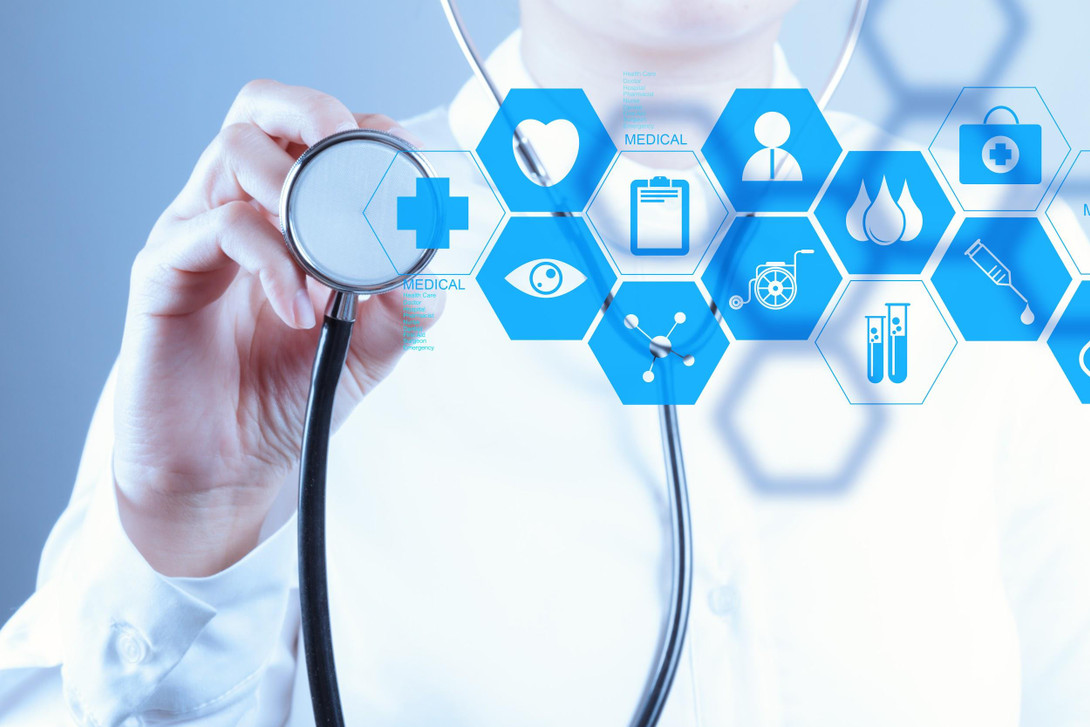Amid the pandemic, digital stethoscopes are seeing a major rise in popularity -- and innovation. Though they've been on the map for quite some time, there's no denying that COVID-19 has expedited their claim to fame. This is in part due to the need for social distancing, and in part due to the emphasized importance of cardiovascular monitoring in COVID patients.
To date, there are two notable digital stethoscopes that most medical practitioners use: the 3M Littmann® CORE and the Eko DUO ECG & Digital Stethoscope. The latter is a two-in-one digital stethoscope and handheld electrocardiogram device.
"The DUO is a game changer," says Dr. Terry Grossman, founder of the Grossman Wellness Center in Denver. "It's helped me to take care of out-of-town patients and out-of-country patients. Having the ability to listen to their heart and listen to their lungs, that's made a huge difference. And it's helped patients to realize, hey if I get sick, I can just call my doctor and have him listen to my lungs without traveling halfway around the country or the world."
Distance Diagnosing
Dr. Grossman presents perhaps one of the more pivotal benefits to a digital stethoscope in a pandemic year: the ability to diagnose from afar. With the ability to upload diagnostic data to a HIPAA-compliant cloud, healthcare professionals can remotely listen to livestream sounds and review ECG data.
"The outbreak of COVID-19 has caused rapid commoditization and adoption of telehealth," says Dr. Steve Pham, an emergency medicine physician and VP of Clinical & Research Affairs at Eko. "Telehealth services are only effective if providers get the critical information – and not information overload – they need to accurately assess patient health. With Eko, clinicians are able to virtually examine cardiac and pulmonary health as if they were standing at the bedside."

Especially during the pandemic, access to such telehealth services aids isolated COVID patients in rural areas with little to few medical resources for their condition. Furthermore, healthcare providers in small hospitals and clinics can use this technology to securely share confidential data virtually with doctors and medical experts in other cities or states.
The wireless capabilities of these digital stethoscopes also makes them practical for social distancing guidelines. Medical providers can wear bluetooth earbuds to listen to a patient's heartbeat, allowing them to maintain more distance than the traditional stethoscope allows. "Recent advancements in telehealth allow expanded access to patient care, particularly to those in rural settings, that can alleviate strain on the health system and reduce unnecessary exposure to COVID-19," Dr. Pham explains. "As 2021 continues, we can expect to see more progress made within telemedicine to equip physicians with full insight during remote consultation, as well as provide a better, more unified patient experience."
Precision & Accuracy
New technology connotes improvement, and improved auscultation is a major factor here. These digital stethoscopes make for more precise readings.
"[Digital stethoscopes] add a very important component of the physical exam to virtual exams," says Dr. Raul Perez-Vazquez, an internist with Tenet Florida Physician Services. "Providers will be able to now significantly broaden the diagnostic accuracy of virtual medicine. It will allow for listening of the lungs, aiding in the diagnosis of conditions like pneumonia, COPD, and heart failure. Cardiac, abdominal and vascular exams will also see significant improvement."

Frontline providers make critical decisions and diagnoses based on sounds they hear from the lungs. With the known impacts of COVID-19 on the lungs, this is yet another reason for the "rapid commoditization" of digital stethoscopes, according to Dr. Pham. With the noise-cancellation features of many of these digital stethoscopes, medical providers can pick up on sounds from the lungs and heart they might not have heard before. Furthermore, built-in amplification settings allow for the ability to isolate more subtle sounds.
"It turns out that the augmented sound available through the Eko stethoscope is better than my high-end cardiology stethoscope that I use in the office," Dr. Grossman says. "I was able to hear a murmur that I'd never heard before. Then I looked at the Eko software and it said on there, ‘murmur.' It confirmed what I thought I heard."
So, not only does the stethoscope technology itself pick up on sounds that could otherwise fly under the radar, but the accompanying software is able to algorithmically assess patterns in the readings to suggest certain diagnoses.
Even post-COVID, the implications of this new technology are rather awe-inspiring. It appears these digital stethoscopes have the potential to improve quality-of-life for patients in more ways than one. They will receive more accurate readings -- and in turn, proper care -- but they'll also more conveniently be able to transition between providers.
With the data from these readings accessible on a HIPAA-compliant cloud server, doctors can securely share patient data with other providers, whether it be due to a specialist referral or a change in network. There's no more need for repetitive testing when each member of that patient's healthcare team can remotely access the same data.
"It really has increased the sense of being cared for," reflects Dr. Grossman. "The patients feel I can really listen to them, not just physically, but their story. It's made an enormous change."

